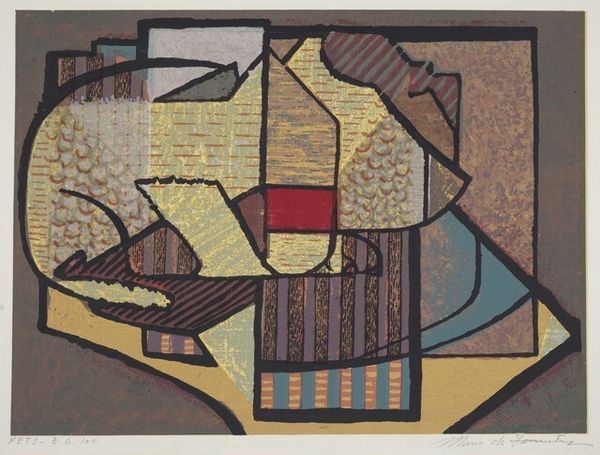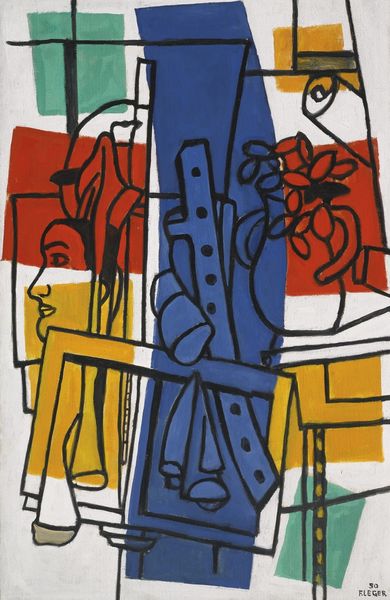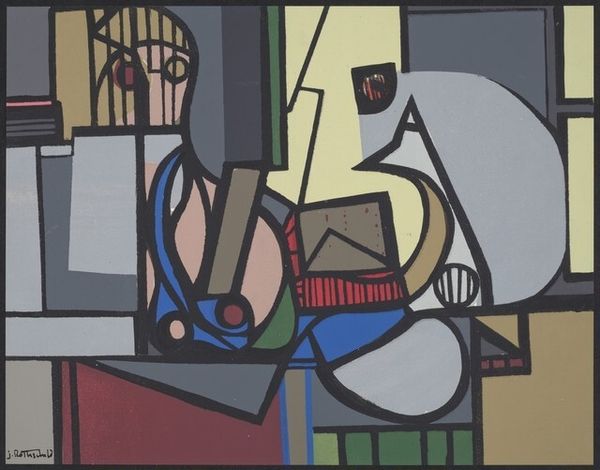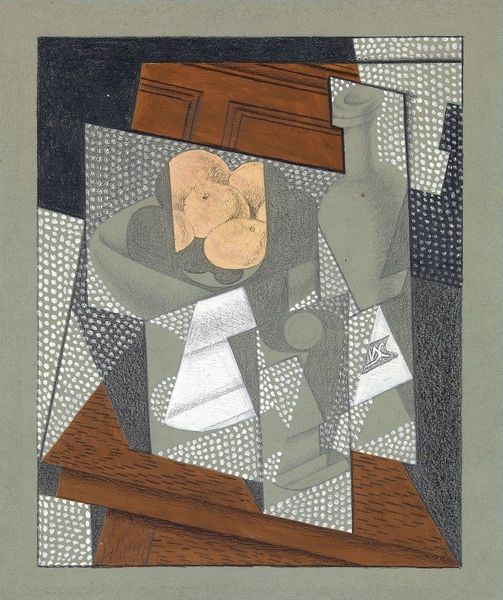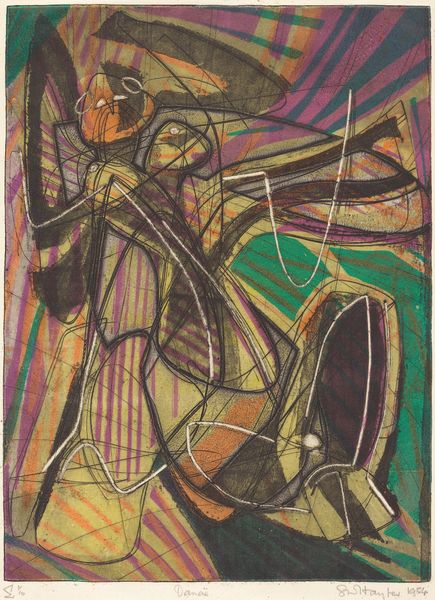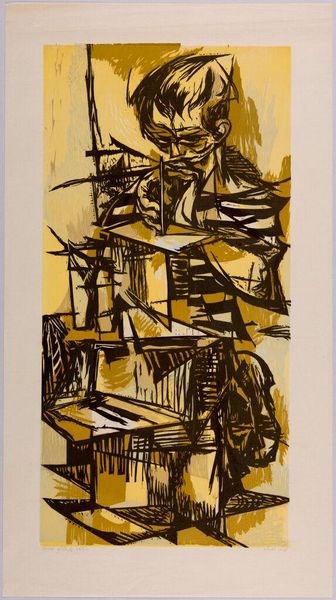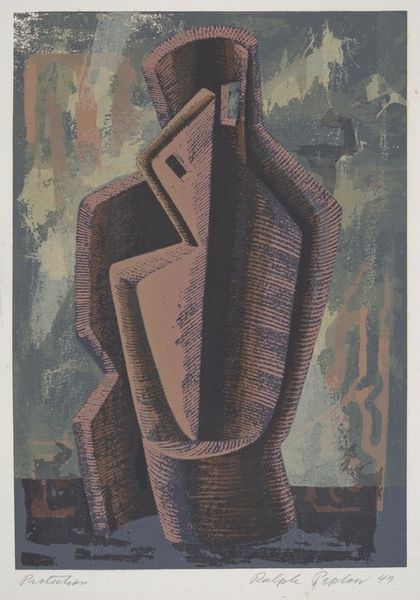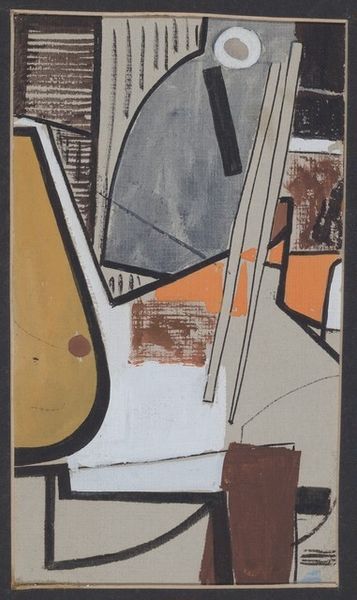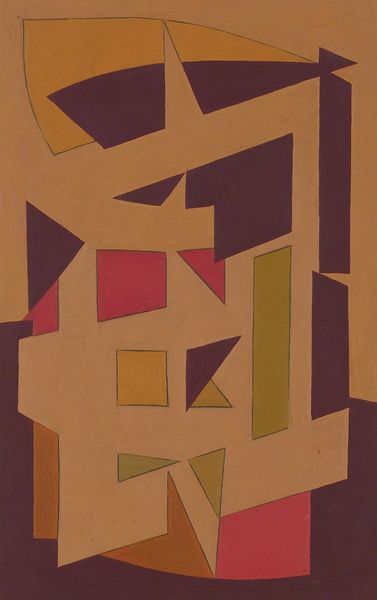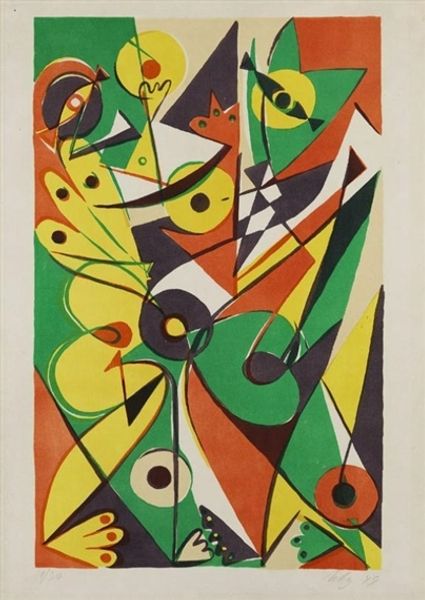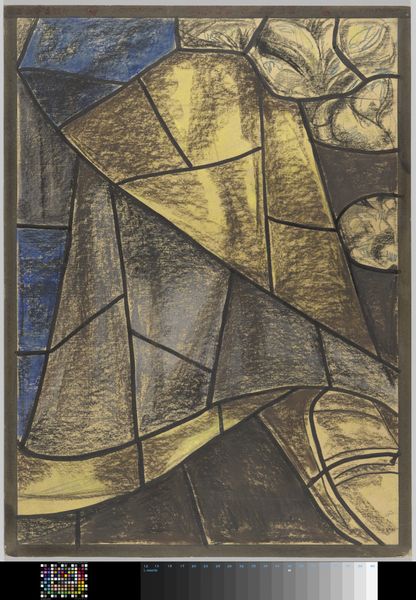
Dimensions: support: 559 x 419 mm
Copyright: © reserved | CC-BY-NC-ND 4.0 DEED, Photo: Tate
Editor: This is Cuthbert Hamilton's "Reconstruction," currently in the Tate Collections. Looking at the interplay of angular shapes and muted tones, I immediately think about the aftermath of something, a sort of rebuilding after… what, I wonder? What do you see in this piece? Curator: I see an emphasis on the means of production itself. Consider the materials: paper, watercolor, perhaps gouache. The very act of "reconstruction" suggests labor, a physical process tied to social context and consumption following potential destruction or obsolescence. What kind of labour is this? And what were the conditions that allowed such art-making? Editor: So, you're thinking about the social and economic conditions that allowed this to be made, rather than just the visual narrative? Curator: Precisely. The materiality speaks to the larger systems at play. It's not just about what we see, but how it came to be. Editor: I never considered that, the artmaking as labour itself. Thank you!
Comments
tate 6 months ago
⋮
http://www.tate.org.uk/art/artworks/hamilton-reconstruction-t00758
Join the conversation
Join millions of artists and users on Artera today and experience the ultimate creative platform.
tate 6 months ago
⋮
In 1913 Hamilton, along with Frederick Etchells, Edward Wadsworth, Gaudier-Brzeska and William Roberts, left Roger Fry's Omega Workshops in support of Wyndham Lewis, who fell out with Fry over a commission. They joined Lewis when he established the Rebel Art Centre in March 1914, and later became associated with the Vorticist movement although not all of them signed the Vorticist Manifesto. Hamilton served as a Special Constable during the First World War. In 1920 he exhibited with the newly-formed 'Group X', established by Lewis and Edward McKnight Kauffer to provide a focus for avant-garde activity in the aftermath of war. Gallery label, August 2004

